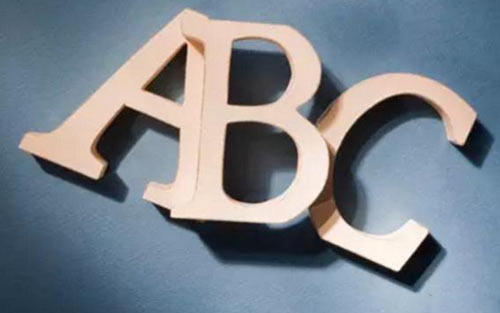时态(tense)是一种动词形式,不同的时态用以表示不同的时间与方式。下面小编告诉你英语时态的用法,大家一起来看看吧!
英语时态的用法:
1. 现在完成时
表示动作发生在过去,完成在过去,但强调与现在情况仍有联系,其结果或影响仍存在。现在完成时有一些标志性的时间状语。
考点一:for + 时间段;since + 时间点
They have lived in Beijing for five years.
They have lived in Beijing since 1995. I have learned English for ten years.
考点二:常见的不确定的时间状语:lately, recently, just, already, yet, up to now; till now; so far, these days
Has it stopped raining yet?
考点三:在表示“最近几世纪/年/月以来……”时间状语中,谓语动词用现在完成时。
in the past few years/months/weeks/days, over the past few years, during the last three months, for the last few centuries, through centuries, throughout history 等
In the past 30 years China has made great advances in socialist construction.
考点四:表示“第几次做某事,”或在 “It is the best (worst, most interesting ) +名词+that” 后面用现在完成时。
This is my first time that I have visited China. That is the only book that he has written.
This is the most interesting film I have ever seen.

2.一般过去时
表在过去某个特定时间发生且完成的动作,或过去习惯性动作,不强调对现在的影响,只说明过去。常与明确的过去时间状语连用,如:yesterday,
last week, in 1945, at that time, once, during the war, before, a few days ago, when。
考点一:used to + do 表示过去经常但现在已不再维持的习惯动作。to为不定式符号,后接动词原形。
比较:be / become / get used to + doing 表示习惯于
He used to smoke a lot. He has got used to getting up early.
考点二:在时间和条件状语从句中,代替过去将来时。
He promised to buy me a computer if he got a raise
过去将来进行时:
一、过去将来进行时的用法
过去将来进行时表示在过去将来某一时间正在发生的动作。它常和表过去将来的时间状语连用,但上下文清楚时,时间状语亦可省略。和将来进行时一样,它也常表计划中的事,不表意愿或打算。

二、过去将来进行时的构成
过去将来进行时由“would + be + 现在分词”构成。如:
I thought you’d be sleeping. 我以为你在睡觉哩。
She said she would be looking after you. 她说她会照顾你的。
He didn’t know when he’d be seeing us again. 他不知道什么时候他会再见到们。
I asked her what she would be doing on Saturday. 我问她星期六干什么。
He said that he would be seeing me off on the l0 o’clock train. 他说他将送我乘10点钟的火车走。
They moved to the main entrance where the car would be waiting. 他们向大门走去,那辆车会在那里等着。
过去完成进行时:
一、结构形式
过去完成进行时由“had been+现在分词”构成,因此无人称变化。
二、用法归纳
■过去完成进行时表示持续到过去某时的一个动作(可算是现在完成进行时的过去式):
The ground was wet. It had been raining. 地是湿的。此前一直在下雨。
At last the bus came. I had been waiting for half an hour. 最后公共汽车来了,我已等了半小时。
She was out of breath. She had been running. 她气喘吁吁,她一直在跑来着。
He gave up smoking last year. He’d been smoking for twenty years. 去年他戒烟了。他抽烟已经二十年。
■过去时间可用一个时间状语表示:
When I first met her, she had been working in the company for ten years. 我第一次见到她时,她在那家公司已工作十年了。
I had not been waiting long when a taxi drew up. 我没等多久就来了一辆出租车。
She had been looking at the parcel for some time before she realized that it was for her mother. 这包裹她看了好一会儿才明白这是寄给她妈的。
Until/Up till then she had been living with her daughter. 到那时为止她一直和她女儿一起住。
将来完成进行时:
一、将来完成进行时的用法
将来完成进行时表示某一动作从某一时间开始一直延续到将来某一时间(即说话者人提及的时间),是否继续下去,要视上下文而定。如:
By this time next week, I will have been working for this company for 24 years. 到下星期此刻,我已经为该公司干了24年了。
If we don’t hurry up the store will have been closing before we get there. 咱们若不快一点儿,等我们到了那儿,店门就会关了。
二、将来完成进行时的构成
将来完成进行时由“will / shall have been+现在分词”构成。
By the end of this year he’ll have been acting for thirty years. 到今年年底他当演员就满30年了。
I shall have been working here in this factory for twenty years by the end of the year. 到今年年底,我在这个工厂工作就有20年了。
三、将来完成进行时连用的时间状语
与将来完成进行时连用最多的时间状语时是“by+将来时间”,见上面的例子。当然除“by+将来时间”外,连用其他的时间状语也是可能的。如:
He will have been working all day. 他整天将都在工作。
She will have been having treatment all her life. 她将终生受到治疗。
I’ll have been teaching for thirty years this winter. 到今年冬天我就已任教三十年了。
赞(0)
12
12
分享:

